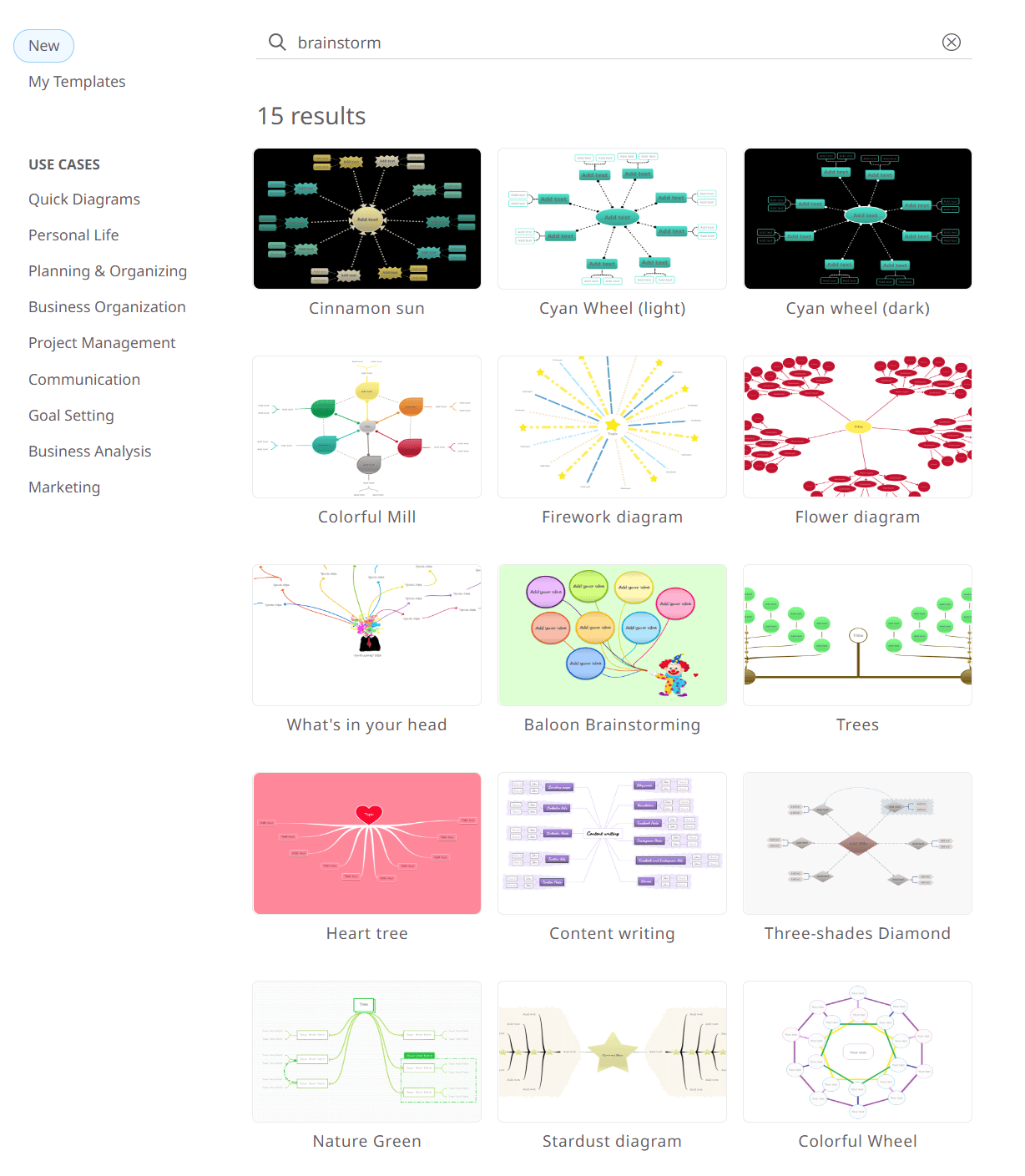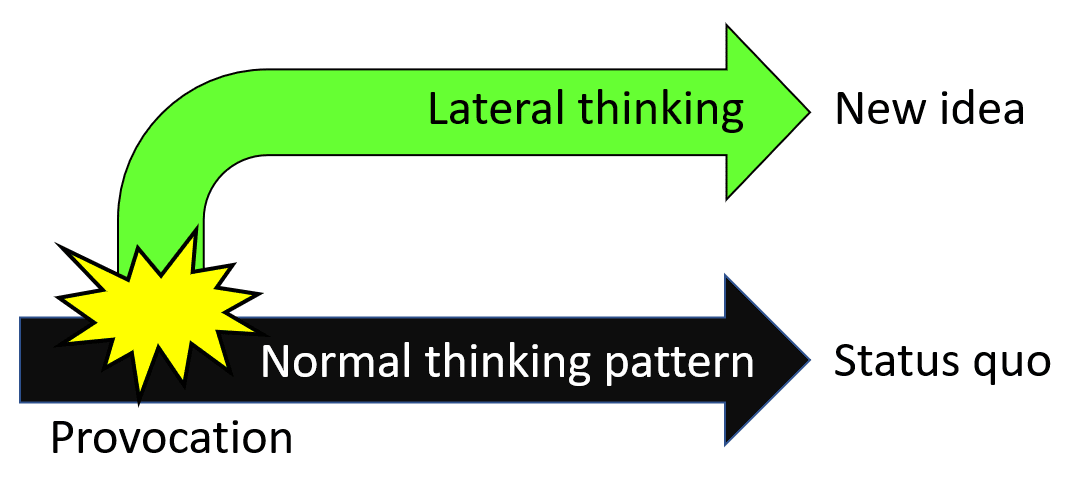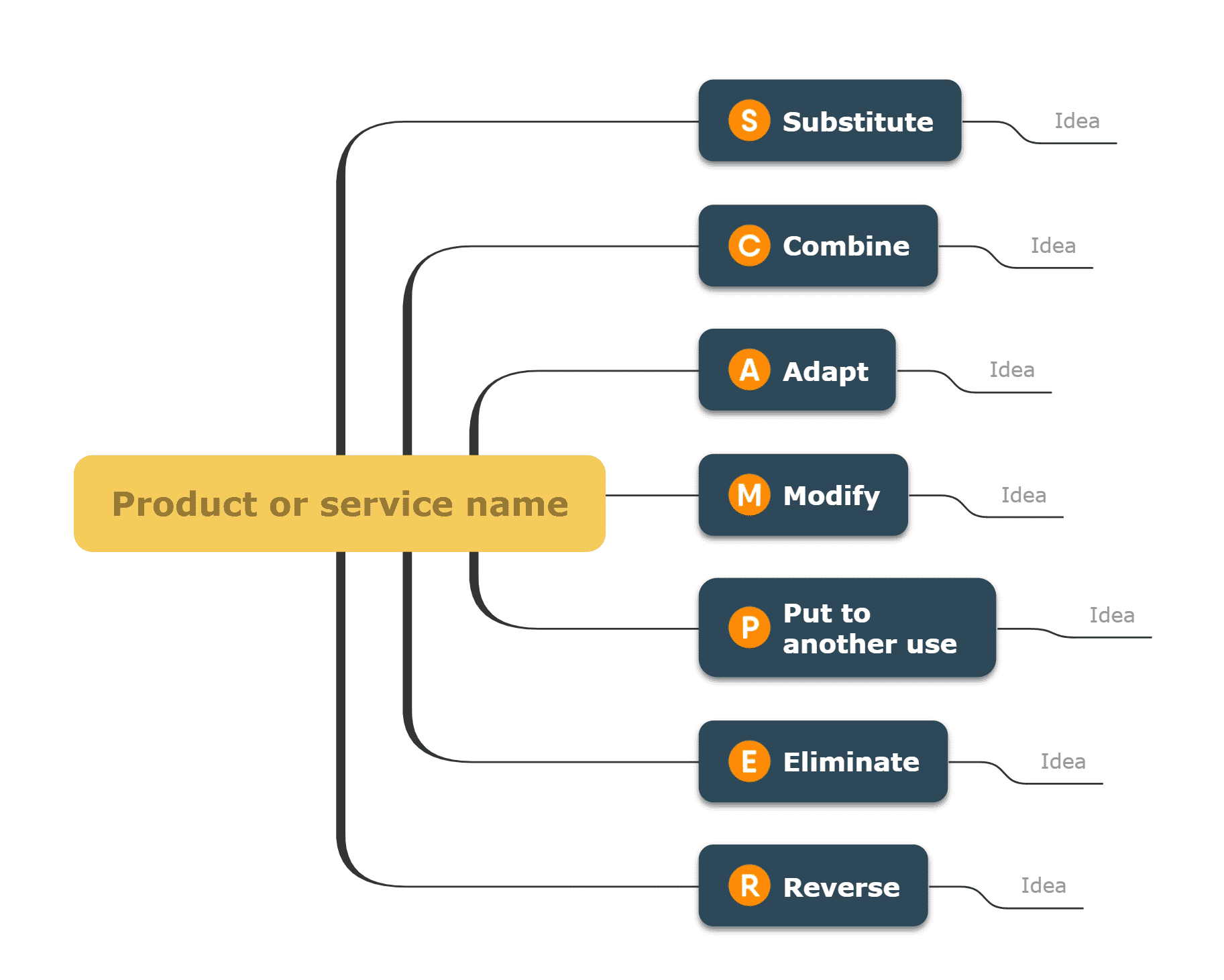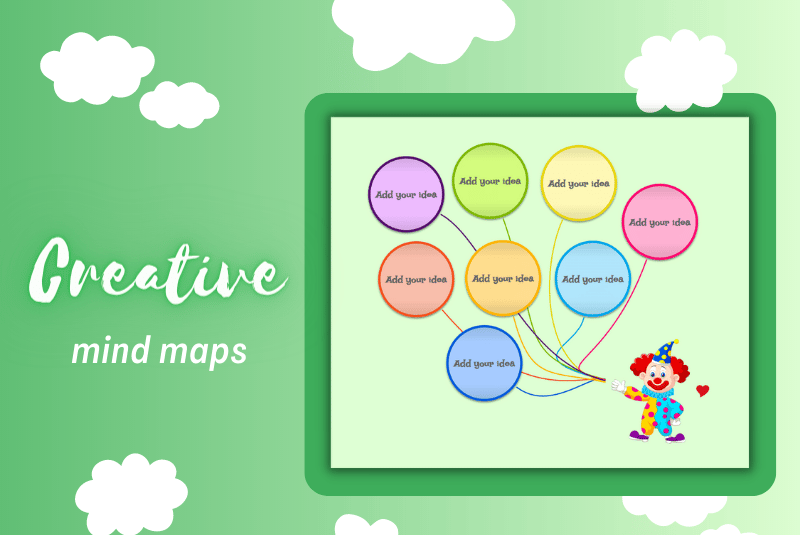
The term “creative mind map” highlights the connection between mind mapping tools and creativity. But all mind maps are creative. They all require your imagination to create something new. They capture thoughts and connections that exist only in people’s minds and make them visible, just like art does.
From the beginning, mind mapping has been associated with brainstorming diagrams. For many people, this may be the only way they use it. There are at least two reasons that this works. Drawing out a mind map unlocks waves of related ideas. Once you start writing down connected ideas around the central idea, more and more of them will appear. Mind map software is also a highly effective workspace for creative methods such as SCAMPER. We will look at these in more detail in this article.
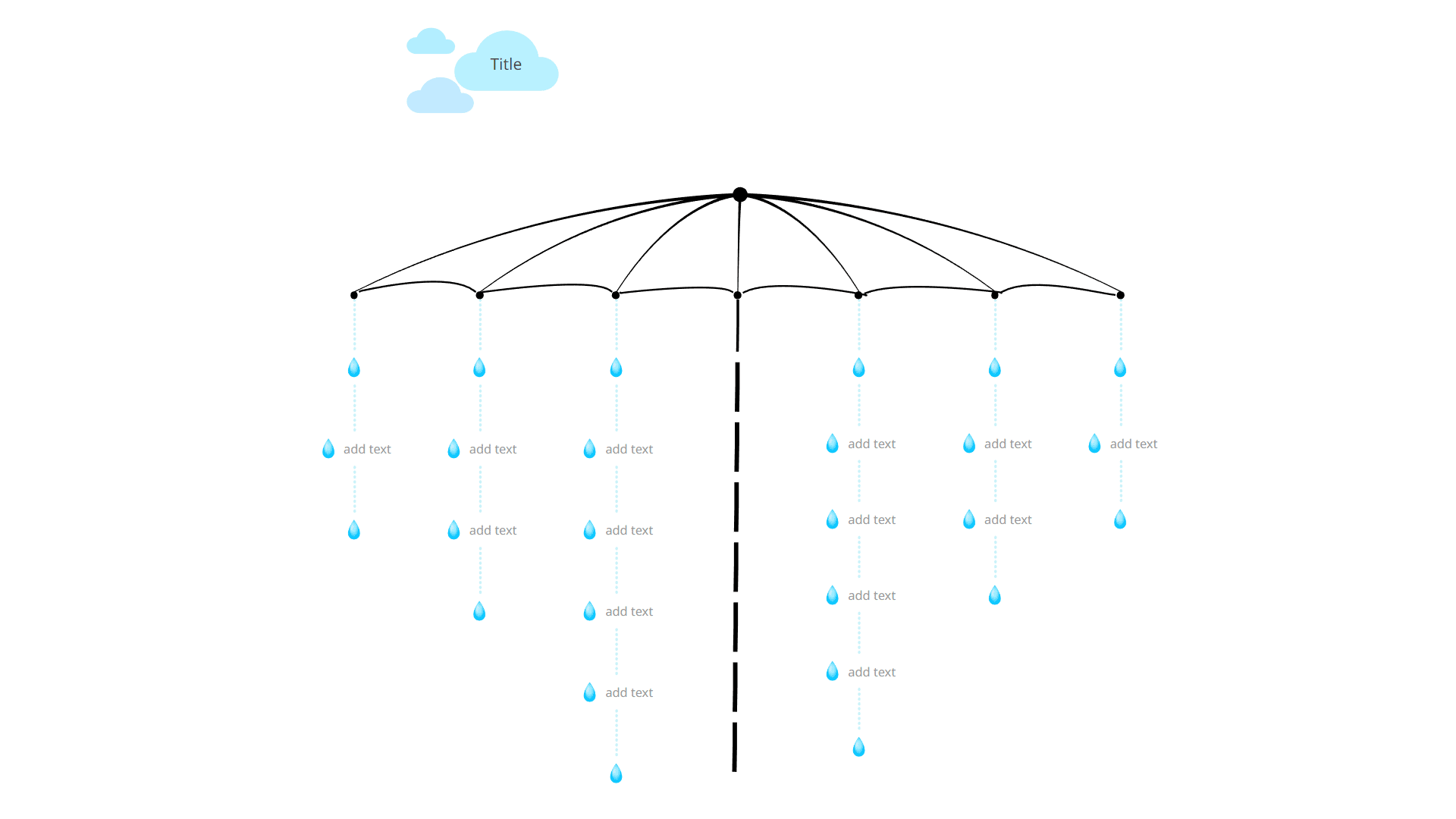
What is “creativity”?
Creativity is seen as something special, a skill that not everyone possesses. The term “creative type” is sometimes used positively, and sometimes negatively. People who are oriented towards action sometimes have no patience with dreamers.
But we all need to be creative. We all need to solve problems and find new ways to deal with things. The proverb “Necessity is the mother of invention” reminds us that we can all be creative when necessary. You might not aspire to be an “artist”, but most people would like to be better at problem solving.
Everyone can learn to improve their creative skills. It’s not just a question of “being” creative. We are very good at creating and explaining connections in our minds. There are ways to tap into that. When you dream, your brain builds an incredibly creative story out of some random thoughts. The artist Salvador Dali would go to sleep with a ball in his hand. He hoped that dropping the ball would wake him when his mind was at its most creative.
When people say they are “not creative”, they don’t really mean that. They just find it very hard to set aside their expectations and rules for how things work. They always let logic and reasoning override their imagination. But logic and reason are often faulty and limiting. We almost always over-simplify how things work and then use that for decisions.
You may need to develop a new idea, find a new approach, solve a problem, change a situation, or change perceptions. These issues can all arise in subjects that are not considered “creative”, such as project management. They require the creation of something that does not exist today. Or maybe it does exist but has never been noticed before. The second idea is a big clue to some of the creative methods.
How mind maps support creativity
Tony Buzan, who popularized mind mapping, encourages the use of images, shapes, and colors to aid creativity. The graphic design of a map makes it more interesting. But there are other factors that contribute more.
A mind map is all about creating connections between ideas. Ideas do not exist on their own. Thinking of something always leads to something else, whether or not it is logically connected. Writing individual ideas on a whiteboard or in a list works, but soon runs dry. Creating a mind map with mind map software triggers a “flow” that generates many more connected ideas. When you capture ideas visually, they start to multiply.
Using mind map maker software to capture what you already know is a great start for building ideas. Understanding something well is halfway to improving it. But it is important not to get trapped in logical thinking. This may prevent you from imagining new connections. A polished visual representation of how things work may leave no room for new ideas. You only need a simple mind map to get oriented.
Mind map maker software is also frequently used for project management. You may already be using it when you encounter a problem that needs some creativity. Or a business planning project will benefit from creative ideas and presentations to inspire others.
You can also use mind map templates for inspiration. Mind map templates sometimes give you a process to follow. You could browse subject-specific templates just to see what approach they take. Then you can borrow ideas for your own work. Or if you find the graphic design inspiring, just use one of the mind map templates for that and ignore the contents.
Running brainstorming sessions
If you have ever run a brainstorming session, you will know how hard it is to keep people thinking positively and creatively. Critical thinking takes over and people start to question whether the process will lead anywhere.
Six Thinking Hats
Edward de Bono’s famous Six Thinking Hats model describes some common thinking styles.
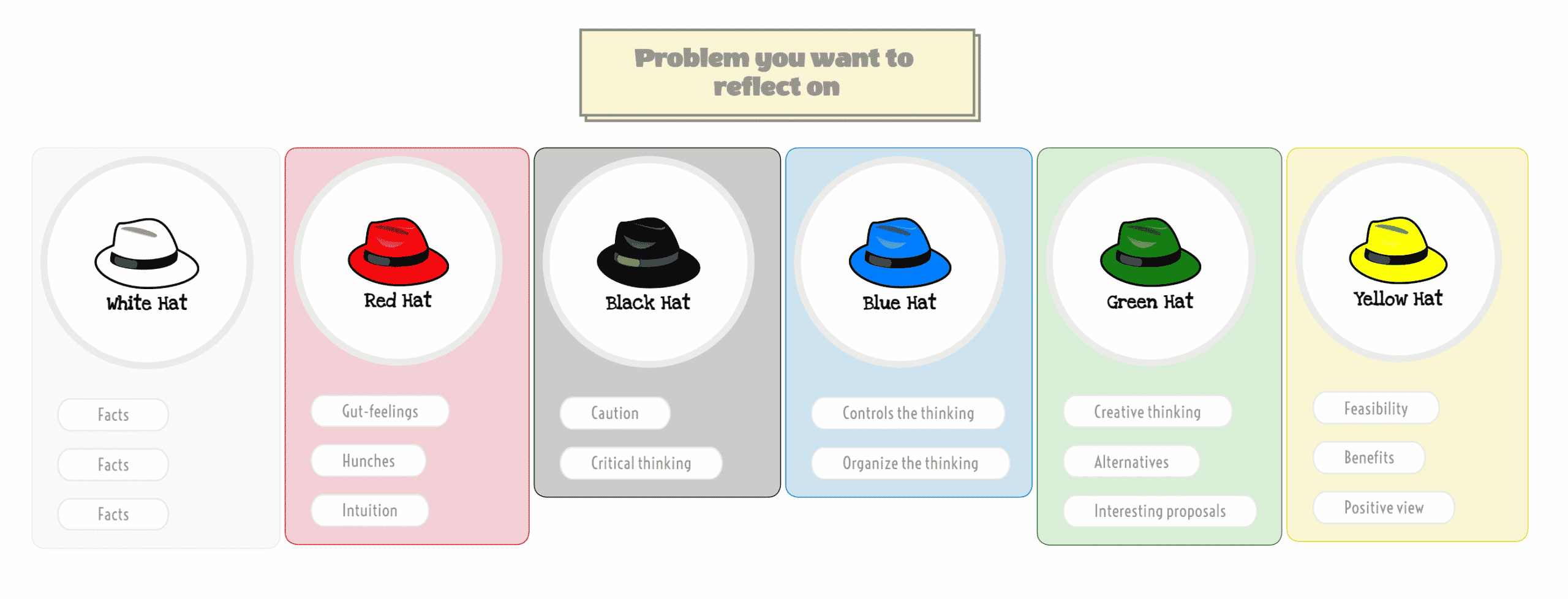
- “White Hat” thinking looks at facts, information, what is known, and what is not known.
- “Red Hat” thinking consists of emotions, hunches, and intuition.
- “Black Hat” thinking sees only problems, pitfalls, and difficulties.
- “Blue Hat” thinking looks at process, sequence, and actions.
- “Green Hat” thinking creates solutions, new ideas, and possibilities.
- “Yellow Hat” thinking seeks value and benefits.
“Black Hat” thinking is the quickest and easiest for just about everyone. Anyone can find a flaw in a new idea, and almost all new ideas are brought down by the first shot. Red Hat thinking follows closely behind. Occasionally people will use White Hat facts and information to challenge new ideas. They will often state Red Hat opinions as if they were White Hat facts.
If you want to get some serious Green Hat and Yellow Hat thinking done, the Green Hat needs to be protected from White, Red, and Black hats. These can all be used to stifle Green Hat thinking by taking things too literally. Some people find it very difficult to listen to “crazy” ideas. They feel it is wasting their time and try to shut it down quickly. Being told to suspend judgment is unrealistic for some. In their mind, there is no point discussing something that will never happen. They are not wrong, but they are not right either. You need to help them understand that brainstorming ideas and judging them are separate things. The Mindomo mind map templates gallery has a Six Thinking Hats template that can help you to explain this.
Managing brainstorm sessions
We looked at running brainstorming sessions in a recent article on collaborative mind mapping. To summarize:
- State the issue or problem as clearly as possible.
- Give people time to incubate some ideas beforehand.
- Make it clear that judging new ideas will follow later. Discussion and development come first.
- Use a mind mapping tool to capture and connect ideas visually. You can use a mind map online to work with remote teams.
- Start to organize ideas only when everyone agrees to move from brainstorming to judgment. Don’t allow categorization or elimination too early. You can use drag and drop in your mind map to quickly reorganize and categorize ideas.
Eliminating ideas too early will weaken the results. You might have found something useful if some weird ideas had been explored further. Encourage people to say “Yes, and…” rather than “No, but…“.
Early Black Hat thinking may simply prove that the problem cannot be solved, with nothing left on the list of possibilities.
Searching the Mindomo template maps gallery for “brainstorm” shows you several creative templates that can be used to capture brainstorming sessions.
Provocation as a creative technique
In his 1992 book “Teach your child how to think”, Edward de Bono describes “lateral thinking” as a way to escape familiar and expected patterns. He says you cannot dig a new hole somewhere else by continuing to dig deeper where you are. Lateral thinking means breaking free of established patterns to see things differently. Otherwise, your mind runs to the same conclusions every time. These familiar patterns tell us that no new ideas are possible, and problem solving is futile. Deliberate creativity forces you out of these deep channels.
There are techniques for making the lateral jump to different thinking. As mentioned before, we are very good at creating connections that have no logic behind them. You can use random words to trick your brain into a new direction of thought.
Imagine that sales of our paper notebook are declining. We need to update the design to bring it back to life. I went to the Random Word Generator website and it gave me three words: “Crisis”, “Blonde” and “Plastic”. How could these relate to our product? Could we design a notebook, especially for use in emergencies? Could plastic parts make a difference? Or could we eliminate plastic from it altogether? Giving your brain a group of words forces it to come up with explanations connecting them. It is not concerned with logic.
Drawing a visual representation of connections in a mind map accelerates the process and triggers related ideas. Bizarrely, you are likely to remember the idea of crisis notebooks for a long time. As Tony Buzan points out, you remember things by connecting them, not memorizing them in isolation.
Deliberate methods to provoke lateral thinking are very effective. They work very well individually or in high-trust groups. Using them in groups requires that everyone understands the game and how to play it. Watch out for people who cannot take off their Black Hats even for a few minutes.
SCAMPER for new ideas
SCAMPER is a creativity tool that can be applied to any situation. It generates “provocations” that make you think about assumed limits and rules. It helps you to make lateral jumps away from compelling logic and familiar thinking.
SCAMPER requires a good understanding of how things work today, and how they are made up of connected parts. It then challenges the behavior of those parts and the way that they work together. Of course, this will generate a lot of ideas that lead nowhere. But there might be a couple of valuable insights buried in there. SCAMPER is like panning for gold. You will spend a lot of time sifting through dirt, but occasionally a little nugget will shine in the mud.
SCAMPER stands for Substitute, Combine, Adapt, Minimize, Put (to another use), Eliminate, and Reverse.
Substitute
What would happen if we substituted a part with something else? Could something different do a better job?
Combine
What would happen if we combined two parts together, or did them at the same time? What are the benefits of doing them separately?
Adapt
How could we adapt a part to change its behavior or relationships? What tweaks could we make? What would the effects be?
Minimize / Magnify
What would happen if we made a part smaller or bigger? Making problems bigger or smaller helps to understand their limits.
Put to another use
Could this part be used somewhere else? What else might it be able to do?
Eliminate
What would happen if we skipped this part altogether? The effects of doing this may reveal its essential purpose.
Reverse / Rearrange / Reorder
What would happen if we did things in the opposite order, or in a different order? Might the problem disappear? Could the product, service, or process still work?
A simple mind map describing how things work now is a great starting point. You can then look at each part of the process, product, service, or issue and apply SCAMPER to generate questions for discussion. These questions themselves might make little sense but discussing them might trigger useful insights.
Suppose you wanted to improve project management in your organization. Create a mind map with “Project Management Process” as the central idea, and map out how your process works today. Then applying the SCAMPER mnemonic to each part in turn. What would happen if we eliminated the approval of specifications? Could project reviews be done at a cocktail party instead? What would happen if we asked for volunteers instead of planning project resources in detail?
Testing the purpose and interactions of each part helps us to see them more clearly. This opens a path to improving them.
Conclusions
We have seen how Mindomo mind maps not only develop your creative skills but are a powerful platform for creativity techniques. Check out the Mindomo SCAMPER template to get started.
Keep it smart, simple, and creative!
Author: Nick Duffill

